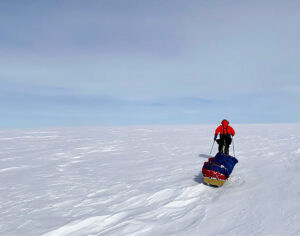The new technologies allow new measurements of this changing environment
The sun has finally risen above the horizon in the Arctic after months of darkness. That means the floating ice that clogs the world’s northernmost seas every winter is beginning to loosen and it’s time for Christopher Zappa to head for the town of Ny-Ålesund, in the Svalbard Archipelago, a group of islands located about halfway between the northern tip of Norway and the North Pole.
Zappa, an oceanographer at Columbia University’s Lamont-Doherty Earth Observatory, wants to understand the details of exactly how sea ice breaks up and melts, and he is going to call on a quintessentially 21st century technology to help him do it. Zappa is among a small group of scientists globally who are pioneering the use of “unmanned airborne systems”—or drones, to you and me—in a campaign to better understand Earth’s changing climate.
Read more…





